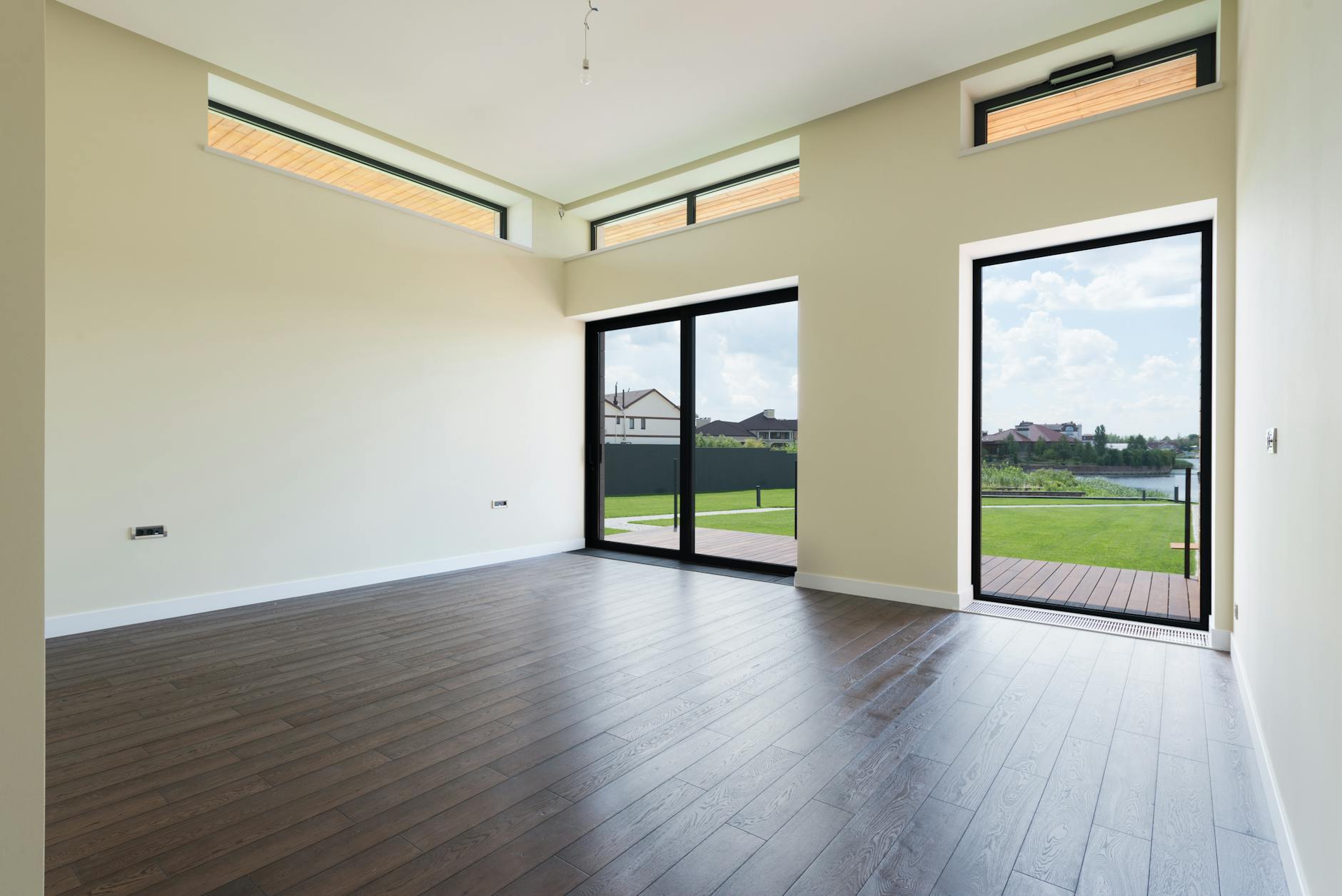Why Technological Advancements Are Revolutionizing Residential Developments in Australia

Impact on Design Processes
Enhancing Design Accuracy
In my experience, technological advancements have redefined design accuracy, especially in urban developments like Melbourne's Docklands and in the creation of display homes Melbourne. Utilising cutting-edge software, we can create precise architectural models that account for all variables, from structural integrity to environmental impact. Advanced modelling software ensures every angle and measurement is accounted for, minimising errors and maximising efficiency. This precision is crucial when working with specific requirements, such as those found in a house and land package Melbourne. It allows us to predict construction challenges and adjust plans proactively, rather than reactively.
Streamlining Workflows
Streamlining workflows in construction is no longer just an ideal—it's a necessity. Industry innovations, represented well by the seamless systems in mt atkinson display homes projects, show us how integrated technologies significantly cut down project timelines. Cloud-based platforms enable real-time collaboration among architects, engineers, and construction teams. Communication barriers are eliminated, leading to faster decision-making and more efficient use of resources. This level of synchronisation, inspired by engineering marvels like the Bolte Bridge, sets the stage for smoother operations across all phases of a project.
Facilitating Creative Exploration
Creative exploration in architectural design is getting a boost from emerging tech. New tools offer a digital canvas that encourages experimentation and innovation, essential for creating cheap house and land package solutions without sacrificing quality. Software advancements let us test various design elements in virtual environments, checking for aesthetic appeal as well as functionality. This capability invites both established and junior architects to push boundaries, conceptualising smart, sustainable homes that cater to budget-conscious clients. With such tools, innovation is not just possible; it's scalable and sustainable across projects.
Sustainable Building Solutions
Eco-Friendly Materials
In the growing emphasis on sustainability within the construction industry, selecting the right eco-friendly materials can make a significant impact. Among these materials, recycled steel and bamboo are gaining traction due to their durability and minimal environmental footprint. The use of bamboo, for instance, supports erosion control thanks to its rapid growth cycle. As we apply these materials to display homes Tarneit, the focus remains on maintaining aesthetic appeal without compromising sustainability.
Energy-Efficient Innovations
Adopting energy-efficient innovations is becoming standard practice in residential development. Solar panels, high-performance windows, and advanced insulation techniques are leading the charge. Beyond their environmental benefits, these technologies reduce utility costs and improve indoor comfort. Melbourne’s Docklands development projects exemplify these innovative solutions in action, offering a roadmap for integrating renewable energies into urban housing projects effectively.
Waste Reduction Techniques
Minimizing waste in construction is another crucial element in sustainable building. Techniques such as modular construction and precise material consumption planning significantly reduce on-site waste. By taking inspiration from engineering landmarks like the Bolte Bridge, where efficient material usage and waste management have been executed, these strategies can be mirrored in upcoming projects. Thoughtful solutions like those seen in Port Melbourne help meet industry standards while promoting eco-conscious practices.
Smart Home Integrations
Automation Technologies
From programmable thermostats to automated lighting systems, automation technology is reshaping how we approach residential development. For professionals in construction and architecture, these advancements are not merely trends; they are becoming essential components that enhance both functionality and comfort. By employing smart sensors and AI-driven systems, homes are now able to anticipate the needs of their occupants, adapting in real-time to improve efficiency and user experience.
Advanced Security Features
Security remains a top priority in residential developments, and the integration of advanced security features provides peace of mind for homeowners. Modern systems go beyond traditional alarm systems, incorporating smart locks, real-time video monitoring, and biometric access controls. These innovations offer both robust protection and ease of use, making them attractive additions to properties designed for contemporary living. Notably, the advancements seen in places like Melbourne's Docklands development projects highlight the potential of integrating these features effectively in urban settings.
Energy Management Systems
Sustainable living is at the forefront of residential development, and energy management systems play a crucial role in achieving this goal. These systems allow homeowners to monitor and control their energy use, thereby reducing waste and lowering costs. By harnessing renewable energy sources such as solar panels, houses can become energy efficient and contribute positively to the environment. For those planning a house and land package, opting for homes equipped with energy management systems can make a significant difference in both environmental impact and operational savings. Incorporating these systems into designs, particularly in areas with showpieces like display homes sunbury, exemplifies a commitment to innovative and sustainable urban development.
Challenges and Solutions
Overcoming Client Hesitancy
In the current landscape, showcasing the tangible benefits of new technologies can help address client hesitancy. It's important to focus on communication, displaying real-world examples like display homes for sale Melbourne as tangible proofs of potential. Presenting case studies and statistics from renowned Melbourne sites, like the Docklands development projects, can demonstrate successful applications. Clients often need assurance that their investments in innovation will yield dividends.
Balancing Cost and Innovation
Balancing cost with pioneering advancements is a tightrope every construction professional must walk. Maintaining transparency about expenses related to technology integration ensures clients understand the long-term benefits. For instance, investing in innovative insulation techniques can initially seem costly but result in significant energy savings over time. When discussing budgets, include forecasts of cost savings to make the economic advantages more relatable.
Navigating Regulatory Changes
Navigating regulatory changes demands staying informed and agile. As new policies emerge, especially those encouraging sustainability, compliance becomes a critical concern. It's vital to align projects with updated standards, particularly in areas experiencing rapid development, such as Craigieburn. This site is home to display homes craigieburn vic, which exemplify how contemporary residences meet evolving standards. By embedding flexibility into projects from the start, adapting to regulation changes can become part of a streamlined workflow.
Remaining adaptive in an industry marked by rapid innovation ensures you're not just building structures but creating future-ready homes. The need for an insightful approach to these challenges underpins our work, resonating deeply with Melbourne's architectural ethos, echoed in engineering landmarks like the Bolte Bridge.
Collaborative Innovation with Tech Experts
In Melbourne's ever-evolving landscape, collaborating with tech experts is key. This melding of minds fosters innovation and ensures that construction projects not only keep pace with but also shape industry standards. Integrating advanced design software, like those used in the Melbourne's Docklands development projects, allows us to push the envelope in residential architecture. By working closely with technology specialists, we can harness the full potential of cutting-edge tools tailored specifically for the unique demands of the industry.
Commit to Lifelong Learning and Adaptation
Embracing perpetual learning is non-negotiable in today's fast-paced construction scene. As evidenced by the engineering marvel that is the Bolte Bridge, continuous education helps us stay ahead. Industry advancements, such as those seen at Port Melbourne, require professionals to be adept with new technologies and methodologies. Engaging in workshops, participating in online courses, and attending seminars are practical steps in ensuring our skills remain sharp and relevant.
Demonstrate the Value of Technological Benefits
Showcasing the tangible benefits of technology in construction helps dispel any hesitancy. For experienced professionals, it’s important to highlight how innovations streamline operations and enhance project outcomes. Demonstrating technology in action, whether by improving precision in design or boosting project efficiency, allows stakeholders to appreciate its value. Just as residential construction techniques continue to evolve, so too must our approach, always focusing on illustrating the transformative impacts that technology delivers, leaving no doubt of its necessity in modern construction.


